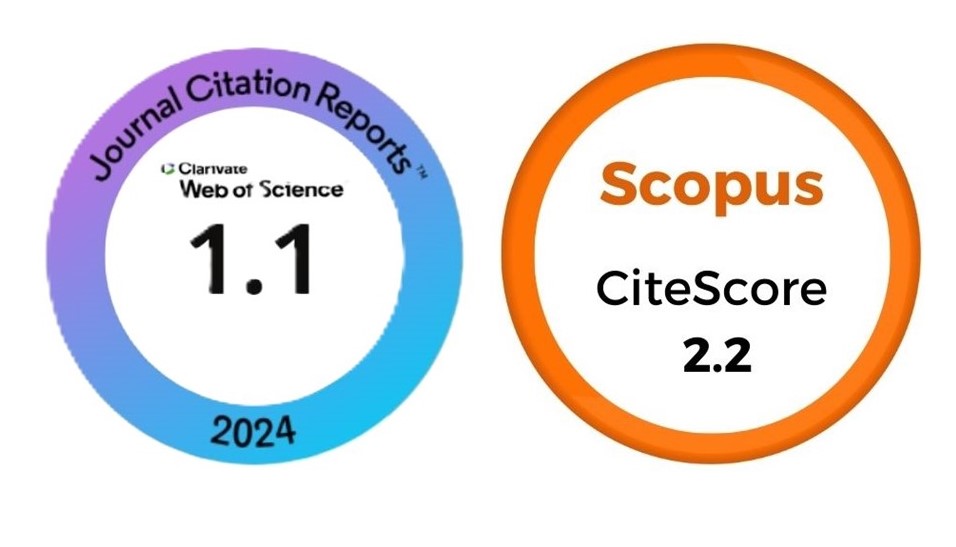Establishment and production of Torch Ginger plants associated with arbuscular mycorrhizal fungi inoculation
DOI:
https://doi.org/10.1590/2447-536X.v29i3.2639Keywords:
Etlingera elatior, Glomeromycota, in vitro cultivation, tropical flowers, rhizomesAbstract
Traditionally, Torch Ginger is commercially propagated via rhizomes. Micropropagation (M) is a viable alternative that ensures the genetic and phytosanitary quality of plantlets. However, in vitro cultivation conditions can lead to morphophysiological disorders resulting in death or difficulties in the acclimatization process and establishment of seedlings/plantlets in field conditions. Thus, Arbuscular Mycorrhizal Fungi (AMF) has been used in some crops in order to mitigate the drastic effects during acclimatization and establishment of micropropagated plantlets in the field. In this sense, the objective of this study was to evaluate the implantation forms and efficacy of micropropagation and AMF inoculation on the establishment and production of Torch Ginger plants. The planting was carried in shading screens (50%) and different implantation forms were used; through rhizome (RIZ) and plantlets micropropagated with (M+AMF) and without (M-AMF) inoculation with arbuscular mycorrhizal fungi. Evaluations of growth, phenology and mycorrhizal colonization were carried out for one year. Micropropagation, independently of AMF inoculation, favoured a better development in height and number of tillers when compared to RIZ plants It is concluded that micropropagated plants of E. elatior showed earlier tiller emission, better development and initial establishment in the field. Additionally, the forms of implantation of E. elatior via rhizome and via micropropagation with or without AMF inoculation produce inflorescences with the minimum characteristics required for commercialization.
Downloads
References
ARAÚJO, P.G.P.; ALBUQUERQUE FILHO, J.C.C.; SILVA, S.S.L.; CASTRO, C.E. F.; GONÇALVES, C.; LOGES, V. Characterization and selection of torch ginger for cut flower. Ornamental Horticulture, v.24, n.4, p.371- 379, 2018. https://doi.org/10.14295/oh.v24i4.1207
BASIRU, S.; HIJRI, M. Does Commercial Inoculation Promote Arbuscular Mycorrhizal Fungi Invasion? Microorganisms, v.10, n.2, 1-8, 2022. https://doi.org/10.3390/microorganisms10020404
BEGUM, N.; QIN, C.; AHANGER, M. A.; RAZA, S.; KHAN, M. I.; ASHRAF, M.; AHMED, N.; ZHANG, L. Role of arbuscular mycorrhizal fungi in plant growth regulation: implications in abiotic stress tolerance. Frontiers in Plant Science, v.10, n.1068, 1-15, 2019. https://doi.org/10.3389/fpls.2019.01068
BRITO, V.N; TELLECHEA, F.R.F.; HEITOR, L.C.; FREITAS, M. S. M.; MARTINS, M. A. Fungos micorrízicos arbusculares e adubação fosfatada na produção de mudas de paricá. Ciência Florestal, v. 27, n. 2, p. 485-497, 2017. https://doi.org/10.5902/1980509827730
DUBREUIL, V.; FANTE, K.P.; PLANCHON, O.; SANT’ANNA NETO, J.L. The types of annual climates in Brazil: an application of the classification of Köppen from 1961 to 2015. Revista Franco-Brasileira de Geografia, n.37, 2018. https://doi.org/10.4000/confins.15738
EMBRAPA. Empresa Brasileira de Pesquisa Agropecuária. Sistema brasileiro de classificação de solos. Embrapa, Brasília, Brasil. 2013. 306p.
FIGUEIREDO, J.R.M.; PAIVA, P.D.O.; SILVA, D.P.C.; PAIVA, R.; MESQUITA, R.; SOUZA, R.R.; REIS, M.V. Temperature and GA3 on ROS and cytogenetic stability during in vitro cultivation of strelitzia zygotic embryos. Ciência e Agrotecnologia, v. 45, n.e020220, p.1-9, 2021. https://doi.org/10.1590/1413-7054202145020220
GERDEMANN, J.W.; NICOLSON, T.H. Spores of mycorrhizal endogone species extracted from soil by wet sieving and decanting. Transactions of the British Mycological Society, v.46, n.2, p.235–244, 1963. http://dx.doi.org/10.1016/S0007-1536(63)80079−0
GIOVANNETTI, M.; FORTUNA, P.; CITERNESI, A.S.; MORINI, S.; NUTI, M. P. The occurrence of anastomosis formation and nuclear exchange in intact arbuscular mycorrhizal networks. The New Phytologist, v.151, n.3, p.717–724, 2001. http://dx.doi.org/10.1046/j.0028-646x.2001.00216.x
JENKINS, W. R. A rapid centrifugal-flotation technique for separating nematodes from soil. Plant Disease Report, v.48, n.9, p.692, 1964.
KALAMULLA, R.; SANDARUWAN, D.; KARUNARATHNA, S.C.; STEPHENSON, S.L.; TIBPROMMA, S.; ELGORBAN, A.M.; AL-REJAIE, S.; YAPA, P.N.; Suwannarach, N. Assessment of community dynamics of arbuscular mycorrhizal fungi in the rice (Oryza sativa L.) rhizosphere and potential application as biofertilizer. Sustainability, v.14, n.24, 16537, 2022. https://doi.org/10.3390/su142416537
KAPOOR, R.; SHARMA, D.; BHATNAGAR, A.K. Arbuscular mycorrhizae in micropropagation systems and their potential applications. Scientia Horticulturae, v.116, p.227-239, 2008. https://doi.org/10.1016/j.scienta.2008.02.002
LINO, I. A. N.; SILVA, D. K A.; MARTINS, J. C. R.; SAMPAIO, E. V. S. B.; MAIA, L. C. Mycorrhizal inoculation and application of cattle manure in field-grown maize in semiarid conditions. Experimental Agriculture, v.55, n.6, p.1–9, 2018. http://dx.doi.org/10.1017/S0014479718000443
LOGES, V.; COSTA, A.S.; GUIMARÃES, W.N.R.; TEIXEIRA, M.C.F. Potencial de mercado de bastão-do- imperador e sorvetão. Revista Brasileira de Horticultura Ornamental, v.14, n. 1, p.15–22, 2008. http://dx.doi.org/10.14295/rbho.v14i1.225
LOPES, E.A.P.; SILVA, A.D.S.; MERGULHÃO, A.C.S.; SILVA, E.V.N.; SANTIAGO, A.D.; FIGUEIREDO, M.V.B. Co-inoculation of growth promoting bacteria and glomus clarum in micropropagated cassava plants. Revista Caatinga, v. 32, n. 1, p.152-16, 2019. http://dx.doi.org/10.1590/1983-21252019v32n116rc
MURASHIGE, T., SKOOG, F. A revised medium for rapid growth and bioassays with tobacco tissue cultures. Physiologia Plantarum, v.15, n.3, p.473–497, 1962. http://dx.doi.org/10.1111/j.1399-3054.1962.tb08052.x
PHILLIPS, J. M.; HAYMAN, D.S. Improved procedures for clearing roots and staining parasitic and vesicular- arbuscular fungi for rapid assessment of infection. Transactions of the British Mycological Society, v.55, n.1, p.158–161, 1970. http://dx.doi.org/10.1016/S0007-1536(70)80110-3.
PINHEIRO, M.V.M.; RÍOS-RÍOS, A.M.M.; CRUZ, A.C.F.; ROCHA, D.I.; ORBES, M.Y.; SALDANHA, C.W.; BATISTA, D.S.; CARVALHO, A.C.P.P.; OTONI, W.C. CO2 enrichment alters morphophysiology and improves growth and acclimatization in Etlingera Elatior (Jack) R.M. Smith micropropagated plants. Brazilian Journal of Botany, v.44, n. 3, p.799–809, 2021. https://doi.org/10.1007/s40415-021-00741-9
PRAY, T.J.; NISSIM, W.G.; ST-ARNAUD, M.; LABRECQUE, M. Investigating the effect of a mixed mycorrhizal inoculum on the productivity of biomass plantation willows grown on marginal farm land. Forests, v.9, n.4, 185, 2018. https://doi.org/10.3390/f9040185
SALOMON, M.J.; DEMARMELS, R.; WATTS- WILLIAMS, S.J.; MCLAUGHLIN, M.J.; KAFLE, A.; KETELSEN, C.; SOUPIR, A.; BÜCKING, H.; CAVAGNARO, T.R.; VAN DER HEIJDEN, M.G.A. Global evaluation of commercial arbuscular mycorrhizal inoculants under greenhouse and field conditions. Applied Soil Ecology, v. 169, 104225, 2022. https://doi.org/10.1016/j.apsoil.2021.104225.
SILVA, A.R.; MELO, N.F.; YANO-MELO, A.M. Acclimatization of micropropagated plants of Etlingera elatior (Jack) R. M. Sm. inoculated with arbuscular mycorrhizal fungi. South African Journal of Botany, v.113, n.1, p.164–169, 2017. http://dx.doi.org/10.1016/j.sajb.2017.08.014
SILVA, D.P.C.; PAIVA, P.D.O.; HERRERA, R.C.; PORTO, J.M.P.; REIS, M.V.; PAIVA, R. Effectiveness of silicon sources for in vitro development of gerbera. Plant Cell Tissue Organ and Culture, v.141, n. 1, p.77–85, 2020. https://doi.org/10.1007/s11240-020-01768-8
SOUZA, R.R.; BECKMANN-CAVALCANTE, M. Z.; SILVA, E.M.; AMARAL, G.C.; BRITO, L.P.S.; AVELINO, R.C. Alterações morfofisiológicas e crescimento de helicônias em função de diferentes ambientes de sombreamento. Comunicata Scientiae, v.7, n.2, p.214- 222, 2016. https://doi.org/10.14295/CS.v7i2.884
SOUZA, R.R.; PAIVA, P.D.O.; SOUZA, A.R.; SILVA, R.R.; SILVA, D.P.C.; REIS, M.V.; PAIVA, R. Morpho-anatomical changes and antioxidant enzyme activity during the acclimatization of Genipa americana. Acta Physiologiae Plantarum, v.43, n.93, p. 1-10, 2021. https://doi.org/10.1007/s11738-021-03263-9
ULISSES, C.; MORAIS, M.B.; BARBOSA, M.R.; ALBUQUERQUE, C.C.; WILLADINO, L.; CAMARA, T.R. Physiological development of zygotic embryos of heliconias propagated in vitro and conventionally. Horticultura Brasileira, v.36, n.2, p. 229-234, 2018. https://doi.org/10.1590/S0102-053620180214
YAMAWAKI, K.; MATSUMURA, A.; HATTORI, R.; TARUI, A.; HOSSAIN, M.A.; OHASHI, Y; DAIMON, H. Effect of inoculation with arbuscular mycorrhizal fungi on growth, nutrientuptakeandcurcuminproductionofturmeric (Curcuma longa L.). Agricultural Sciences, v.4, n.2, p.66- 71, 2013. http://dx.doi.org/10.4236/as.2013.42011
YUNUS, M. F.; ISMAIL, N. A.; SUNDRAM, T. C. M.; ZAINUDDIN, Z.; ROSLI, N. M. Commercial potentials and agronomic status of Etlingera elatior, a promising horticulture plant from Zingiberaceae family. Journal of Agricultural Science, v.43, n.3, p.665-678, 2021. http://doi.org/10.17503/agrivita.v43i3.2957
ZHANG, Y.; LI, Y.; WANG, R.; XU, L.; LI, M.; LIU, Z.; WU, Z.; ZHANG, J.; YU, G.; HE, N. Spatial variation of leaf chlorophyll in northern hemisphere grasslands. Frontiers in Plant Science, v.11, n. 1244, p.1-14, 2022. http://dx.doi.org/10.3389/fpls.2020.01244
Downloads
Published
Issue
Section
License
Copyright (c) 2023 Ornamental Horticulture

This work is licensed under a Creative Commons Attribution 4.0 International License.








